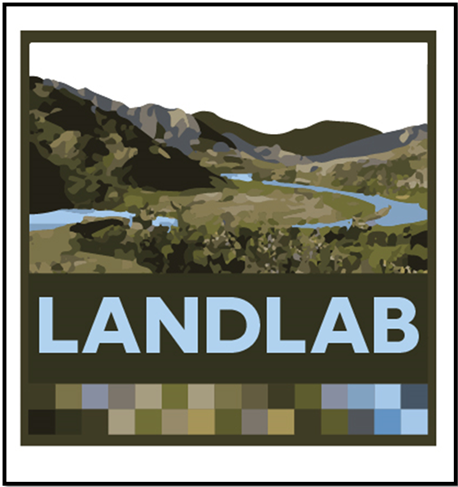In this section, we present three models developed in Landlab to explore woody-plant encroachment.
i) Model A: CATGraSS implementation in Landlab
.ashx) In this model, local biomass production is simulated using physically based vegetation dynamics, driven by rainfall, solar radiation and temperature. Local ecohydrology model is coupled with a spatial Cellular Automata (CA) model that simulates plant establishment and mortality. Spatial CA plant competition model is executed at yearly time steps. Spatial disturbance dynamics (e.g., wildfires and grazing) is not explicitly modeled.
In this model, local biomass production is simulated using physically based vegetation dynamics, driven by rainfall, solar radiation and temperature. Local ecohydrology model is coupled with a spatial Cellular Automata (CA) model that simulates plant establishment and mortality. Spatial CA plant competition model is executed at yearly time steps. Spatial disturbance dynamics (e.g., wildfires and grazing) is not explicitly modeled.
.ashx)
.ashx)
Figure 6: Implementation of Model A on a representative flat catchment in central New Mexico. (top) Time series of modeled vegetation cover occupied by each Plant Functional Type (PFT). (bottom) Spatial organization of PFTs plotted at an interval of 200 years. In this figure, we can observe that lack of topography favors drought-resistant shrubs. This climate is unable to sustain trees on flat surfaces. Shrubs outcompete grass.
ii) Model B: Empirical resource re-distribution based CA model built in Landlab
.ashx) In this model, a stochastic CA model with two state variables, vegetation cover and soil resource storage, is used to model vegetation patterns based on probabilistic establishment-mortality interplay, mediated by post-disturbance resource redistribution. Explicit roles of climate are neglected.
In this model, a stochastic CA model with two state variables, vegetation cover and soil resource storage, is used to model vegetation patterns based on probabilistic establishment-mortality interplay, mediated by post-disturbance resource redistribution. Explicit roles of climate are neglected.
.ashx)
Figure 7: Conceptual model of states and transition processes of Ravi and D'Odorico, 2009's model.
.ashx)
Figure 8: Implementation of Model B for different scenarios. a) plot 1 and map 1: no fires, no grazing - baseline for sensitivity analysis, b) plot 2 and map 2: natural fire (1/10) regime and no grazing - pre-Euroamerican settlement, c) plot 3 and map 3: fires (1/100) and grazing - post Euroamerican settlements, d) plot 4 and map 4: no fires and grazing - sensitivity to fires.
iii) Model C: Model A coupled with Model B's disturbance component
This model is built by coupling Model A with Model B's spatially explicit CA disturbance component that simulates wildfires and grazing. Fire is initiated at a random cell occupied by grass and spreads to vegetated neighbors until either there are no vegetated neighbors or if the fire exceeds a specified size. Grazing converts grass to bare soil.
.ashx)
.ashx)
Figure 9: Implementation of Model C on a representative flat catchment in central New Mexico pre-European fire regime. (top) Vegetation cover occupied by each PFT is plotted with respect to time. (bottom) Resultant spatial organization of PFTs is plotted at an interval of 200 years. By comparing the ecosystem response presented in this figure with Figure 6, we can observe that the disturbance pattern used in this simulation negatively affects woody plants allowing for grass dominance.
Ravi, S., & D’Odorico, P. (2009). Post-fire resource redistribution and fertility island dynamics in shrub encroached desert grasslands: a modeling approach. Landscape Ecology, 24(3), 325-335.


